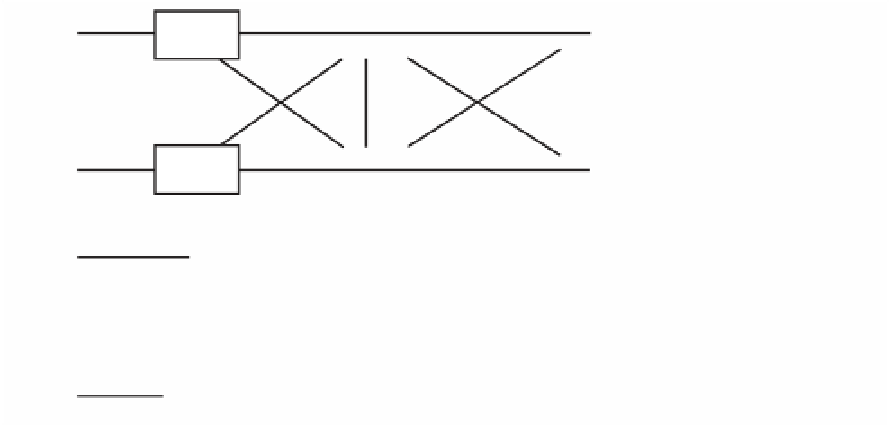Information Technology Reference
In-Depth Information
services. It is feature transparent between PBXs. It is interoperable with public and private
ISDN networks and imposes no restrictions on private dial plans. QSIG is also used
between Cisco Unified Communications Manager (CUCM) and enterprise PBXs in hybrid
implementations. It is also used on Cisco IOS voice gateways for PBX integration.
SS7
SS7 is a global ITU standard for telecommunications control that allows voice-
network calls to be routed and controlled by call control centers. SS7 is used between
PSTN switches. SS7 implements call setup, routing, and control, ensuring that
intermediate and far-end switches are available when a call is placed. With SS7, telephone
companies can implement modern consumer telephone services such as caller ID, toll-free
numbers, call forwarding, and so on.
SS7 provides mechanisms for exchanging control, status, and routing messages on public
telephone networks. SS7 messages pass over a separate channel than that used for voice
communication. SS7 is a CCS technology. CCS7 controls call signaling, routing, and con-
nections between CO, interexchange carrier, and competitive local-exchange carrier
switches. Figure 14-5 shows the connectivity between SS7 components.
Access
Link
SSP
STP
STP
Bridge
Links
Access
Links
SCP
Cross
Link
Cross
Link
Access
Links
Access
Links
SSP
STP
STP
SCP
Access
Link
SSP
STP
Bridge
Links
Cross
Link
Access
Link
SSP
STP
Figure 14-5
SS7 Signaling Components
As shown in Figure 14-5, SS7 has the following system components:
Signaling Control Point (SCP):
Databases that provide the necessary information
for s pec ial c all proce s s ing and rout ing, including 800 and 900 c all s er v ice s, c redit
card calls, local number portability, cellular roaming services, and advanced call cen-
ter applications.
■
Signaling Transfer Point (STP):
Receives and routes incoming signaling messages
toward their destinations. STPs are deployed in mated pairs and share the traffic be-
tween them.
■
Signaling Switching Point (SSP):
and signaling links. Each SSP is connected to both STPs in a mated pair.
■





